
Here’s Everything You Need To Know About The Volkswagen Virtus In...
- Mar 9, 2022
- Views : 2902


Volkswagen India has unveiled the Vento’s successor, Virtus. The carmaker’s second MQB-A0-IN offering, the Virtus is a familiar name as the sedan is already on sale in Brazil. VW has given the Virtus a facelift, which is the one you’re seeing in these images, and it will go on sale in India in May.
The Virtus completes the Volkswagen Group’s India 2.0 program, which involves restructuring of operations and the launch of four made-in-India vehicles (two apiece from Skoda and VW).
Under the skin, the Virtus is the same as the Slavia, and it’s 4561mm long, 1752mm wide, 1507mm tall, and has a 2651mm wheelbase.
Here’s how the dimensions compare with the Vento:
|
Vento |
Virtus |
|
|
Length (mm) |
4,390mm |
4,561mm (+171mm) |
|
Width (mm) |
1,699mm |
1,752mm (+224mm) |
|
Height (mm) |
1,467mm |
1,507mm (+40mm) |
|
Wheelbase (mm) |
2,553mm |
2,651mm (+98mm) |
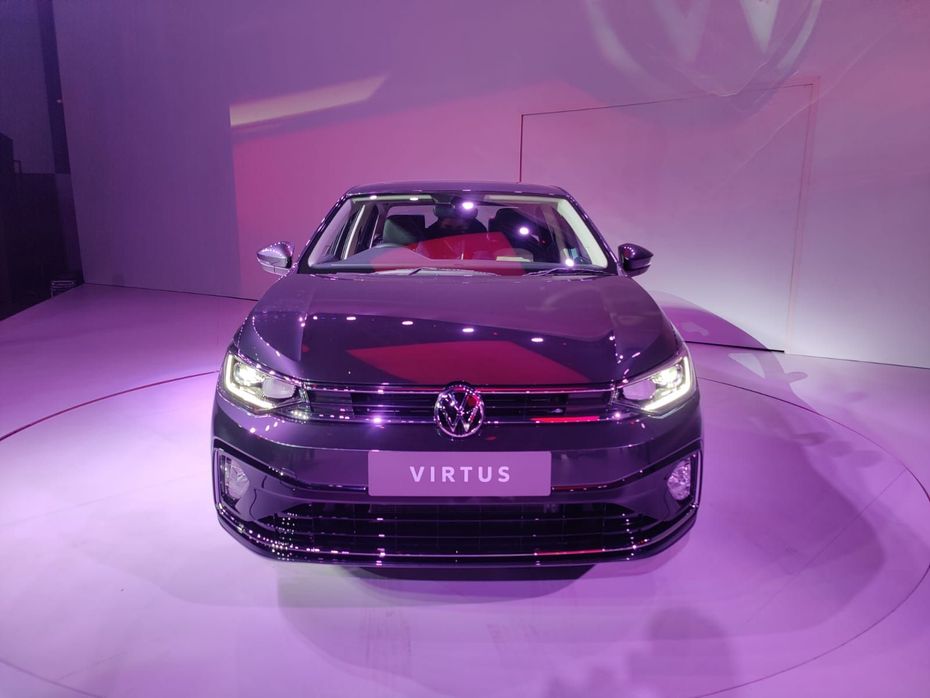
Now, to the design. The Virtus might seem identical to the Polo sold overseas, considering it’s nothing but a Polo sedan. The fascia is typical VW, with the sleek grille and sharp LED headlights. Below that is a bumper with gloss black highlights and a chrome underlining, adding to the sedan’s premium factor.
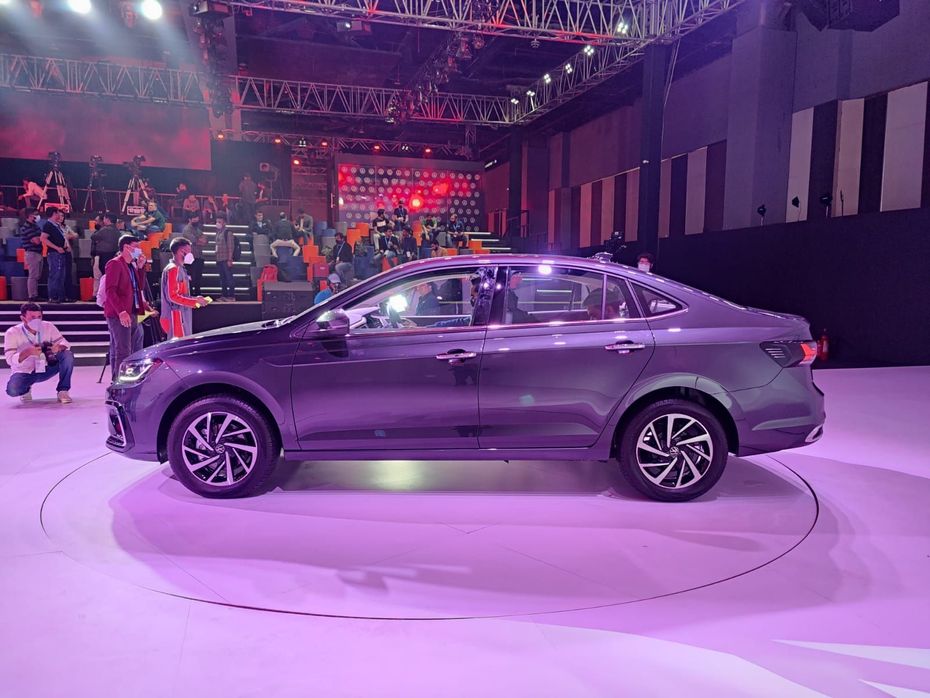
In profile, the Virtus might seem like a Slavia clone, except for its distinct alloy wheel design. Rounding off the exterior styling are the split LED tail lamps and a generous use of chrome on the rear bumper.
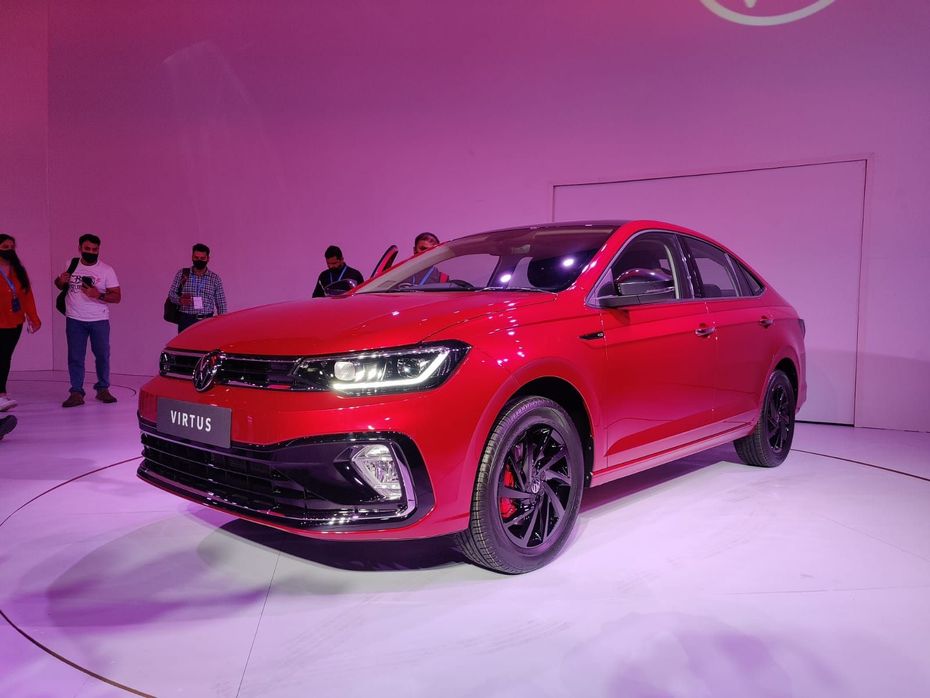
Like the Taigun, the Virtus will get a GT trim, exclusive to the 1.5-litre TSI engine. It will feature a small rear spoiler, bespoke alloy wheels, blacked-out ORVMs, plenty of red highlights in the cabin, and the ‘GT’ badging all around.
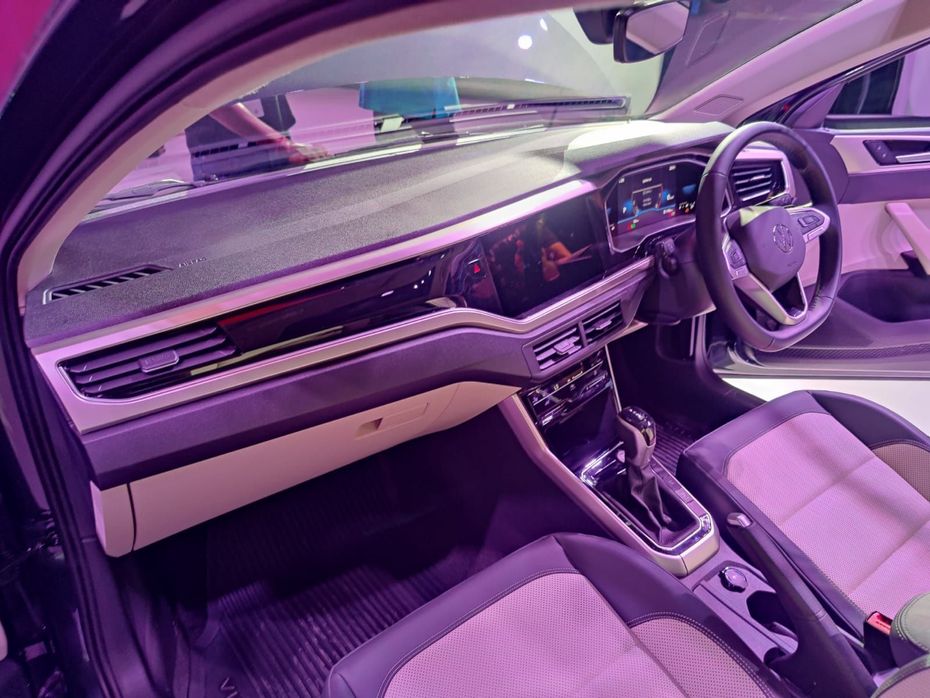
In typical Volkswagen fashion, the Virtus’ dashboard design is pretty straightforward, with all the controls placed where they should be. Thins like the steering wheel, digital driver’s display, touch climate control panel, infotainment system, and gear lever have been shared with the Taigun to keep costs in check.
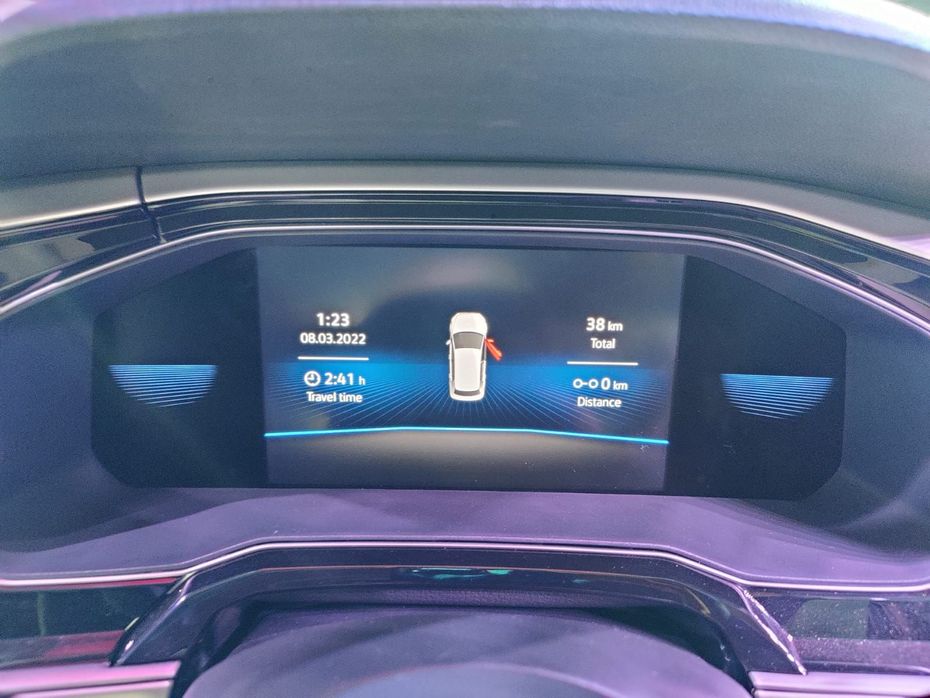
The Virtus packs a 10-inch touchscreen infotainment system, an 8-inch digital driver’s display, wireless Apple CarPlay and Android Auto, a wireless phone charger, ventilated front seats, ambient lighting, 8-speaker sound system, cruise control, keyless entry with push-button start, and auto headlamps and wipers.
Passenger safety is taken care of by up to six airbags, electronic stability control, tyre pressure monitoring, hill hold assist, ISOFIX child seat amounts, and a rear parking camera and sensors.
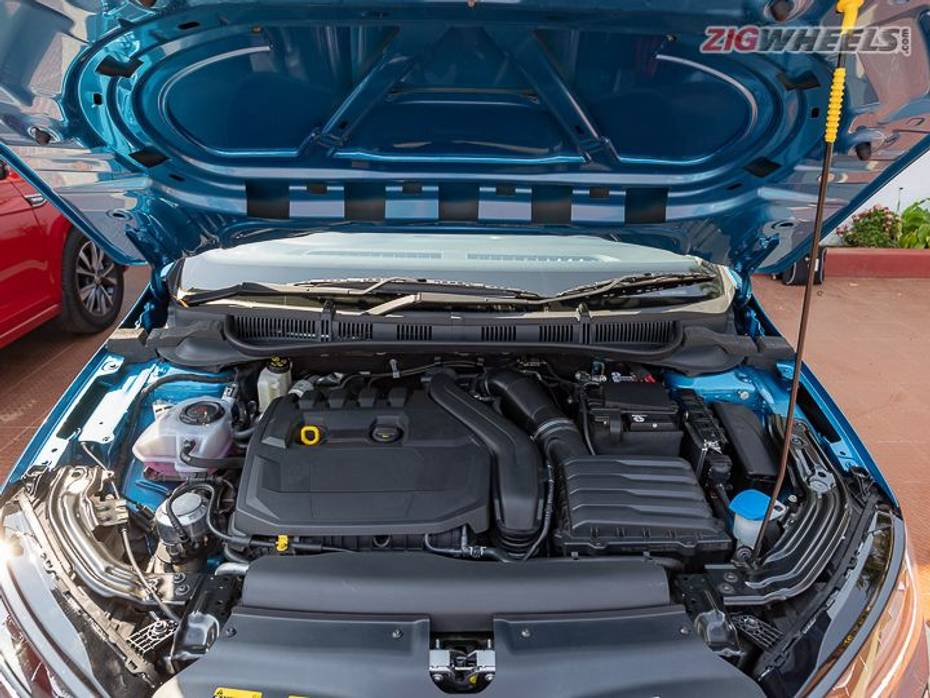
The Virtus gets the option of 115PS 1-litre and 150PS 1.5-litre turbo-petrol engines, each paired with manual and automatic transmissions. The 1.5-litre engine is the most powerful in its segment and gets cylinder deactivation technology to ensure imrpoved fuel economy.
Take a look at the detailed specifications:
|
VW Virtus 1.0 TSI |
VW Virtus 1.5 TSI |
|
|
Power (PS) |
115PS (+5PS over Vento) |
150PS |
|
Torque (Nm) |
178Nm (+3Nm over Vento) |
250Nm |
|
Transmission Option |
6-speed manual / 6-speed torque converter automatic |
6-speed manual / 7-speed DSG (dual-clutch) |
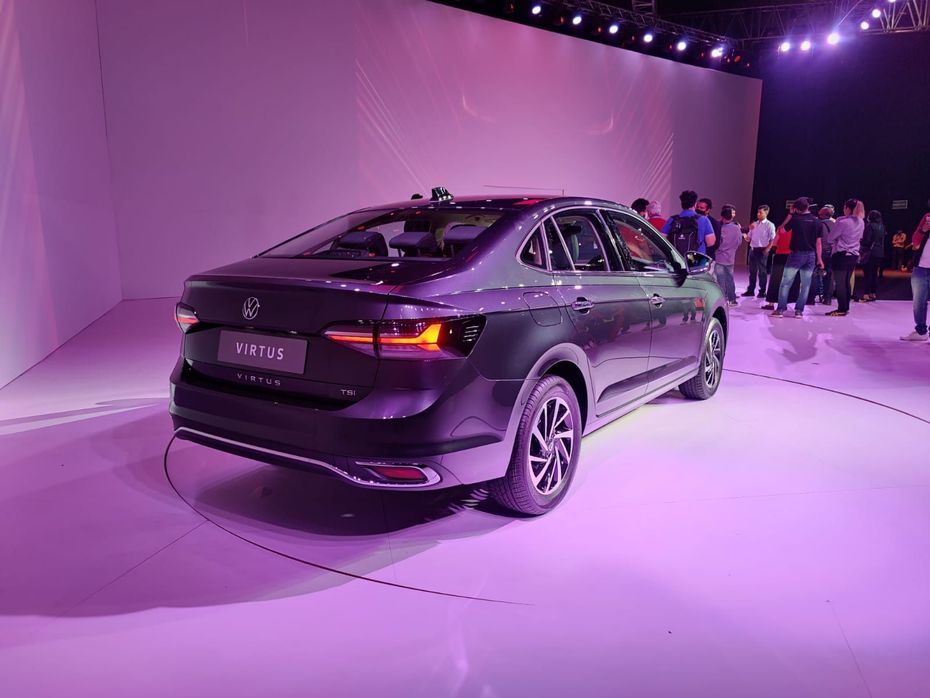
The Volkswagen Virtus is expected to be priced from Rs 10.5 lakh when it goes on sale later in May. It will lock horns with the Skoda Slavia, Honda City, Hyundai Verna, and Maruti Suzuki Ciaz.


Here’s Everything You Need To Know About The Volkswagen Virtus In...

Virtus vs Honda City vs Skoda Slavia: Ride, Handling & Performance...

In A Sea Of SUVs, This Sedan Managed To Hit A Milestone In Just Above...

Check Out The Sporty Looking Volkswagen Virtus GT Line In 8 Real-life...

Volkswagen Virtus GT Line And GT Plus Sport Variants Launched...

In 10 Real-life Images: Upcoming Volkswagen Virtus GT Plus Sport...

Volkswagen Experiences VẄe – Volkswagen’s Inaugural...

Volkswagen Virtus GT Plus Sport VS Hyundai Verna Turbo: Turbo-petrol...

Unlike Skoda, Volkswagen India Won’t Have A Sub-4 Metre SUV...
 Honda City
Honda City
 Skoda Slavia
Skoda Slavia
 Volkswagen Taigun
Volkswagen Taigun
 Honda Amaze
Honda Amaze
 Skoda Kylaq
Skoda Kylaq
India's largest automotive community
 Auto Expo 2025: Toyota Prius Explained In Our Detailed Image Gallery!
Auto Expo 2025: Toyota Prius Explained In Our Detailed Image Gallery!
 Here’s When The Audi RS Q8 Facelift Will Be Launched In India!
Here’s When The Audi RS Q8 Facelift Will Be Launched In India!
 Here Is The List Of Cars Tata Showcased At Bharat Mobility Global Expo 2025
Here Is The List Of Cars Tata Showcased At Bharat Mobility Global Expo 2025
 First In 2022 And Now In 2025! What The Tata Avinya Really Is? – Here’s All You Need To Know
First In 2022 And Now In 2025! What The Tata Avinya Really Is? – Here’s All You Need To Know
 Volkswagen Taigun
Rs. 11.69 Lakh
Volkswagen Taigun
Rs. 11.69 Lakh
 Volkswagen Tiguan
Rs. 38.16 Lakh
Volkswagen Tiguan
Rs. 38.16 Lakh
 Maruti Dzire
Rs. 6.79 Lakh
Maruti Dzire
Rs. 6.79 Lakh
 Hyundai Verna
Rs. 11.07 Lakh
Hyundai Verna
Rs. 11.07 Lakh
 Toyota Camry
Rs. 48.00 Lakh
Toyota Camry
Rs. 48.00 Lakh
 Honda Amaze
Rs. 7.99 Lakh
Honda Amaze
Rs. 7.99 Lakh
 Hyundai Aura
Rs. 6.54 Lakh
Hyundai Aura
Rs. 6.54 Lakh